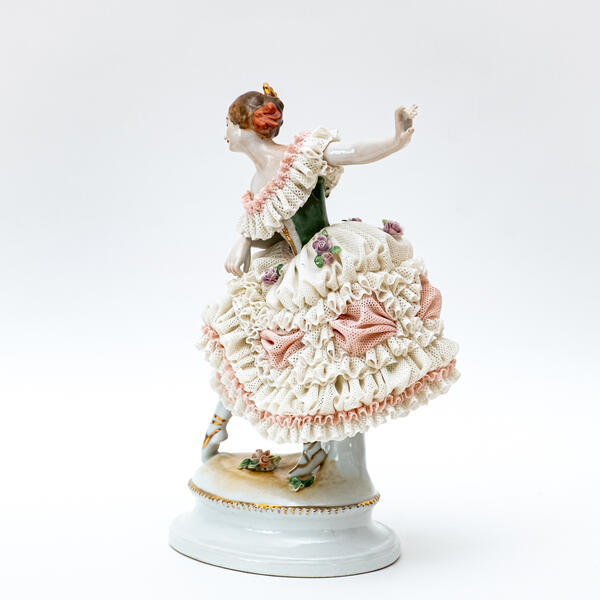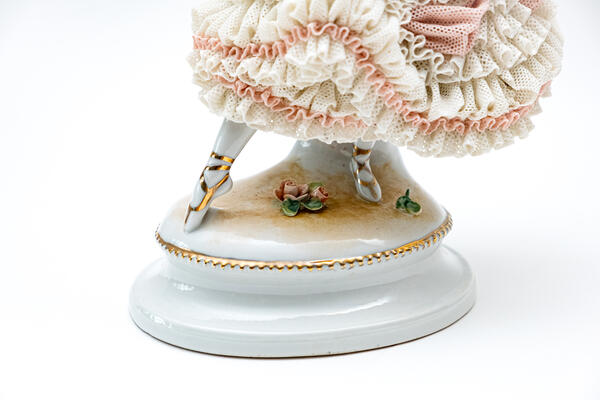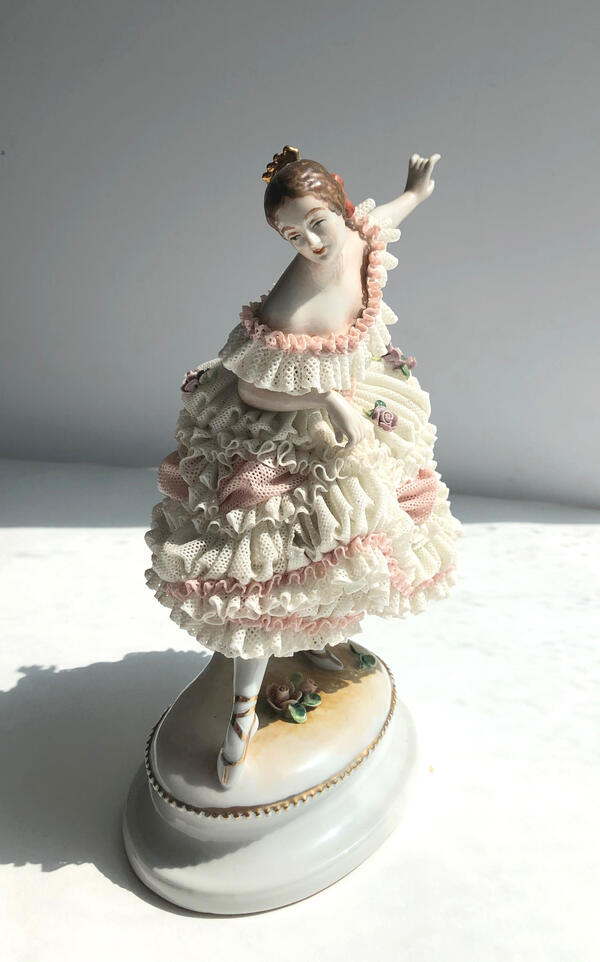The collection of the Sakha Republic National Art Museum features a porcelain statuette “Ballerina Fanny Elssler, ” created by Hugo Meisel at the Volkstedt factory in Sitzendorf.
The figure of a ballerina looks elegant and sophisticated. The skirt and pedestal are decorated with flowers, the dress is made of the finest white and pink porcelain lace, the head is crowned with a golden comb and a bow. The delicate painting of the ballerina’s face seems to be executed by masters of the old school. The graceful pose of the dancer and the exquisite execution made this work of the artist one of the most famous products of the factory. The figurine, which became the hallmark of the Volkstedt-Rudolstadt factory, is still made according to the preserved model.
Hugo Meisel was a master of an unusual creative destiny. He was born in Germany in the city of Rudolstadt, which has been famous for porcelain production since ancient times. From 1909 to 1936/37, he worked intermittently at the oldest Volkstedt porcelain manufactory. Hugo lost his right arm in the First World War. But this tragic event did not stop the sculptor: he did not leave his favorite work and continued to work with his left hand. From 1918 to 1920, Meisel studied sculpture at the Royal School of Applied Arts in Munich. In 1952, he was appointed director of the Heidecksburg National Museum. In 1966, after a long career as an artist, he passed away.
The prototype of this porcelain figurine was the Austrian dancer of the 19th century Fanny Elssler. Fanny (real name Franziska) was born in 1810 in Humpendorf and became an internationally renowned Austrian ballerina. In 1848, after completing triumphant tours of Europe and America, she visited Russia, where she danced for three whole seasons on the St. Petersburg and Moscow theater stages. Her popularity in Russia was unprecedented. During the ballerina’s farewell performance, the enthusiastic audience, after the end of the first act of the ballet “Esmeralda, ” threw about three hundred bouquets on the stage. Fans of Fanny’s talent rolled her carriage home after the performance. Fanny Essler was overwhelmed by such a warm reception.
After a farewell performance in her native Vienna,
the ballerina swore that she would never go on stage again. In 1851, she
returned to Austria. She kept her vow. After performing in the only play
“Faust, ” the actress left the stage and began to lead an ordinary life as a
socialite.






